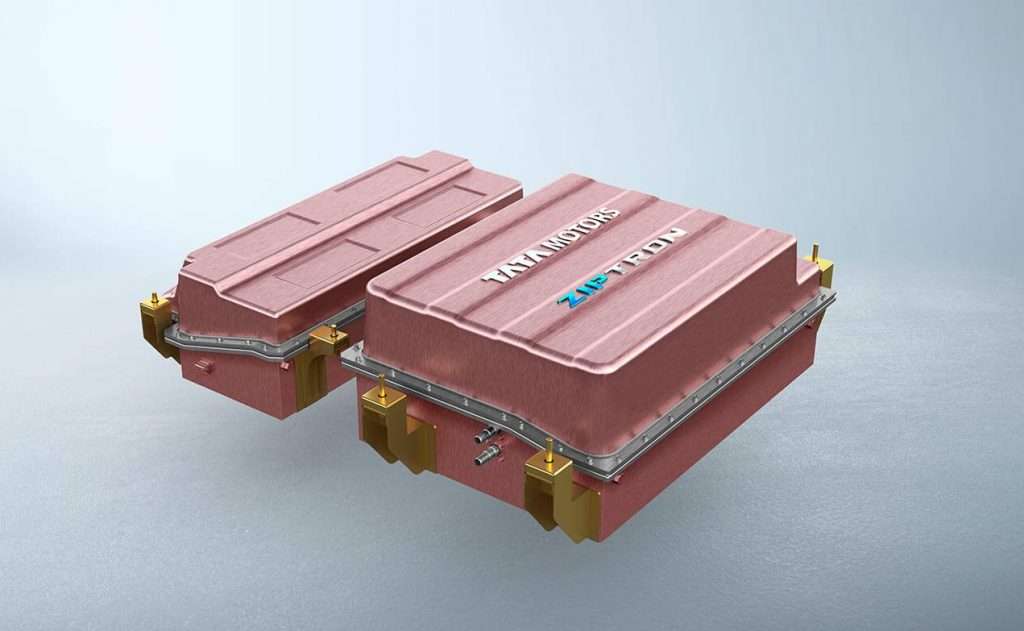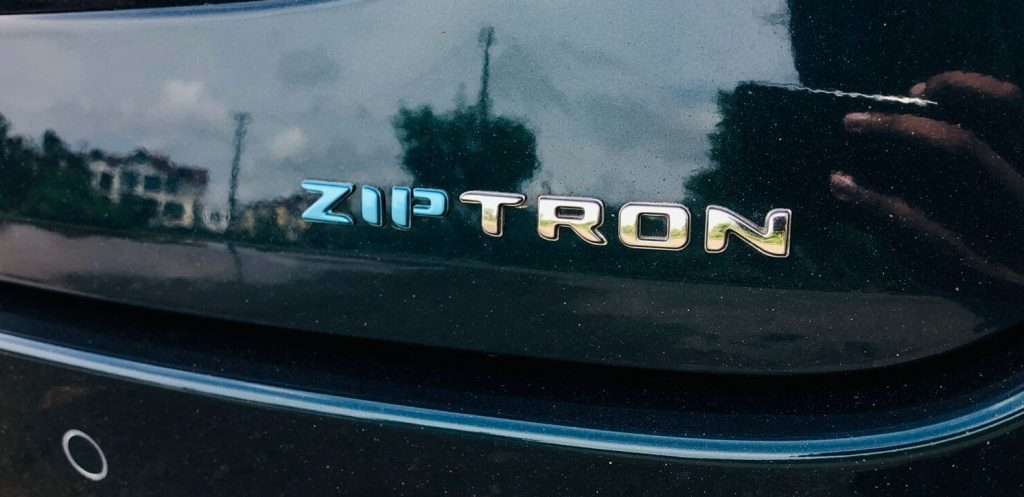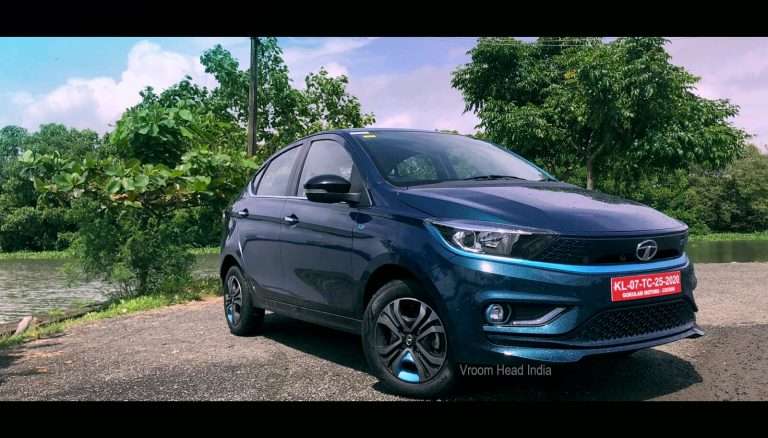The Tigor EV gets a major upgrade for 2021, and is now a proper EV than the ‘barely practical electric’ it once used to be
Words: Neeraj Padmakumar
The Tigor EV was one of the earliest electric vehicles from the homegrown manufacturer. Tata Motors had developed the early prototypes years ago. The electric Tigor had first hit the headlines in 2017 when the manufacturer had bagged orders of supplying 10,000 units of the EV to the government’s ‘Energy Efficiency Services’ project. In 2019, Tata Motors had launched this car in the commercial vehicle segment, where it could be purchased by fleet owners for car hires/ rental services. As a matter of fact, a few models like the Mahindra e-Verito had also been catering to the green urban fleet mobility those days.
Further ahead, Tata launched the electric Tigor in the PV segment too, but with a price tag so heavy that one would even doubt if the 40 hp car would pull it or not! Then came the Nexon EV, a superstar, an ‘electric sensation’ or on an absurdly exaggerated note, the average Indian’s Tesla (Just kidding), taking the industry by storm and wiping out the last ray of hope for the electric sedan.
What Was Wrong With The Old Tigor EV?
First things first, the old Tigor EV was a barbarian! It used a significantly inferior battery and powertrain technology compared to the Nexon EV that came with a benchmarking EV tech called Ziptron. The Nexon was fast, capable, efficient, and well-priced. It had almost all the boxes ticked for the EV buyers. On the other hand, the 2018 Tigor EV was a 40hp electric car with ‘barely 100 km’ range figures, priced at around Rs 12 lakh! This was almost double the price of a petrol Tigor of that time, on which the EV was based.
Meet The 2021 Tigor EV…
Fast forward to 2021, and the Tigor EV gets some serious heart transplant. It gets the revolutionary Ziptron technology from the electric Nexon, meaning highly improved capabilities, reliability and improved VFM aspects. What do all these mean to the buyer? Read on to find out…

Design
Undoubtedly the new Tigor EV is based on the BS6 Tigor and carries forward almost all of its design ethos. The overall shape, dimensions, and base design remain the same as the petrol counterpart. However, there are a few exclusive bits to the electric sedan, like multiple EV Blue accents throughout the vehicle (you even have these inside the alloy wheels, which I find to be a bit of an overstatement), a blacked-out roof, a signature EV grille upfront (the old car had regular mesh grille) and slightly reworked bumpers. The new Teal blue color of our test car is also a notable addition.
Cabin Comfort And Practicality
Almost everything inside the Tigor EV’s cabin remains the same as the standard car. You do get to find the EV Blue accents at multiple places on the inside too. A rotary drive selector now replaces the stick-type unit on the previous car. The overall design and placement of this, however, do look alien at times. One would also face slight ergonomic concerns in shifting as well, but not always! The fabric seats now come with tri-arrow patterns finished in EV Blue.
Other than these, the Tigor EV gets almost all pieces of major equipment from the standard car, like the touchscreen infotainment system with Harman audio, automatic climate control, and the fully digital instrument cluster. The cluster shows important vehicle information like battery percentage, range, consumption, power/regen display, etc alongside speedo, odo, and trip meters. This unit, however, is not as detailed or advanced as the one in the Nexon EV, which as a matter of fact, isn’t the most advanced EV display today!
The rear seats offer adequate amounts of space and comfort. The floor-mounted battery does not cause much inconvenience to the rear seat occupants. The boot, however, would not be the most practical on a daily basis. The spare wheel sits vertically in it, consuming a significant share of space inside. However, for regular cargo requirements, this shouldn’t be much of a trouble as you can chuck in some amount of luggage for sure.

Let’s get social! Follow Vroom Head India On Facebook, Instagram, Pinterest, Whatsapp, and LinkedIn
Ziptron: What Does It Actually Mean To The Driver?
With the Ziptron in place, the Tigor EV has now become a high-voltage (300+) EV. It gets a powerful 26 kWh battery pack and a 55 kW electric motor. The powertrain produces 70 hp and 170 Nm. This is significantly higher than the old Tigor EV’s 40 hp and 105 Nm, and the same reflects in every inch of its performance.
Much like its predecessor, the new Tigor EV gets two distinct drive modes- Drive and Sport, but the actual implication of these in terms of performance is noway similar between the two.
2021 Tigor EV is quite a great car to drive. The car feels quite lively and responds greatly to your throttle inputs. You can definitely milk out the full 170 Nm in the Sport mode, while the Drive mode does a great job in the cities and most other scenarios. Sudden overtakes can be demanding at times, wanting you to shift to sport for a while, owing to the linear delivery in the ‘Drive’ mode.
The Sport as such is no lightning though, the delivery there is quite predictable and manageable for newbies. The acceleration in Sport is quite quick. Though Tata Motors has not yet revealed the exact 0-100 kph figures of this car, I presume 0-50kph comes in less than 6 seconds in ‘S’ mode. It is quite the right fit for many road scenarios. Yes, you can push this car to over 110 kph. However, doing so will have its takes on the range. The Tigor Electric feels quite sure-footed at triple-digit speeds, apparently due to the heavy floor-mounted battery pack which ensures a more-or-less even weight distribution.
The regen on this car feels quite aggressive. It kicks in whenever you lift your foot off the throttle and does slow down the car by fair amounts. This adds to the range, even while making the EV more beginner-friendly.
Another thing to note here is that unlike what we had seen in the Nexon EV, accelerating the Tigor EV gives you slight vibrations on the steering wheel, initially.
If you have driven the old Tigor electric, you will appreciate this car even more. The old car used to struggle for breath whenever you tried to floor it on open roads. 40 hp was evidently sub-par power figures for a car of its kind. However, it is just the other way on the new Tigor EV. Another area where the new Tigor electric pleases you is the handling. The steering is quite nicely calibrated and offers a genuine feel and feedback. You feel quite confident to push this car into most corners.
The overall ride is quite comfortable. However, the suspension stands a tad on the stiffer side, apparently due to the heavy battery pack.

No More Range Anxieties!
The old Tigor EV had raised major range anxieties among buyers as it offered real-world ranges of less than 100 kilometers in most scenarios. However with the Ziptron in place, this fear of getting stranded mid-way stays no more. The car comes with a claimed range of 306 kilometers per charge. However, we have not been able to put this car to a rigorous range test yet. But going by the energy consumed and driver behaviors during our short stint with the car, I think the new Tigor EV would offer somewhere around 250 kilometers every full charge.
Tata Motors seems to have fine-tuned the powertrain, pumped up the regen, and (apparently) messed up the air conditioning to ensure these range figures. Keep the car parked, ignition turned on and AC running and you will be greeted by blower air with almost no cooling! The air conditioning seems to work only as and when you drive, not when you are parked! Frankly, this is a serious compromise made for a few more kilometers on every full!
Proper DC Charging In Place!
With the introduction of Ziptron, the Tigor EV now gets a CCS2 type charging port instead of the old car’s GB/T unit. The old car originally had separate AC and DC charging ports and the manufacturer had ‘recommended’ the customers to always use AC charging and to go for DC only if necessary, apparently due to the limitations of that powertrain.
However, the car now supports DC fast charging and gets 0-80% of its battery replenished at a DC fast charger in under an hour. Also the time for AC charging has also come down.

4 Star GNCAP Safety Rating
Global NCAP crash tested the Tigor EV even before its market debut and awarded an overall 4-star rating to it. This, if you might remember, is the same as that of the regular Tigor. This is also the first EV from Tata that is being crash-tested by GNCAP.
2021 Tata Tigor EV Variants And Prices
The all-new Tigor EV is available in 3 different variants- XE, XM, and XZ+. The XE bears a price tag of Rs 11.99 lakh, XM is priced at Rs 12.49 lakh, and the top-spec XZ+ at 12.99 lakh. These prices are definitely higher (maybe up to Rs 4-5 lakh) than those of the petrol-powered counterpart. However, going by the improvements made to the product and their actual implications to the user, the new Tigor EV could be called a more value for money product than the previous car, which used to have comparable price tags!
| Variant | Ex-Showroom Price |
| XE | 11.99 Lakh |
| XM | 12.49 Lakh |
| XZ+ | 12.99 Lakh |
Let’s get social! Follow Vroom Head India On Facebook, Instagram, Pinterest, Whatsapp, and LinkedIn

